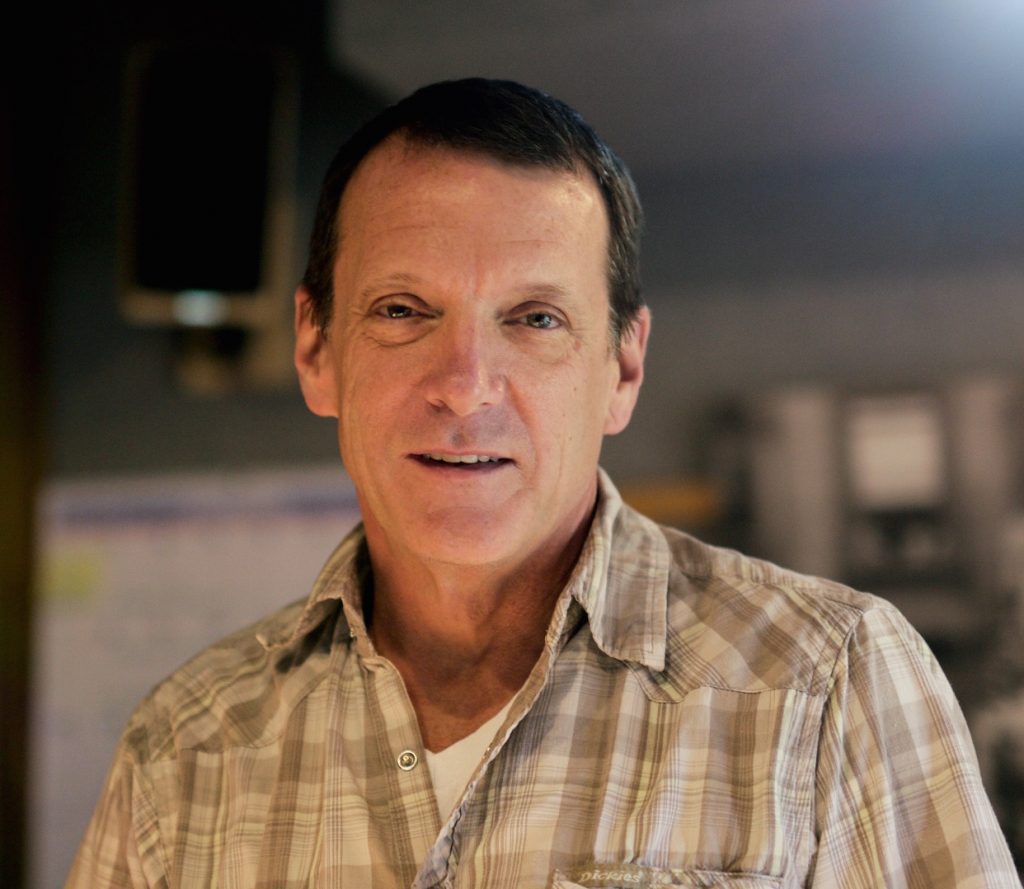
There’s something incredible about a place that can transform your reality into the world of storybooks, films, and fantasy. And if you’ve ever been to any of the Disney theme parks, you know just how immersive this experience can be. But who is responsible for the creation and the innovation behind these worlds? They’re called Imagineers, and in their own words, ‘Walt Disney Imagineering [WDI] is the unique, creative force behind Walt Disney Parks and Resorts that dreams up, designs and builds all Disney theme parks, resorts, attractions, cruise ships, real estate developments, and regional entertainment venues worldwide.’ These designers, builders, and engineers have crafted experiences that thrill and awe millions of people each day.
Last month, I had the chance to chat with Tom Myers, talented sound designer, re-recording mixer, and supervising sound editor who has worked on timeless movies such as Toy Story 3, Up, Cars, and Star Wars Episode III. But interestingly enough, our conversation wasn’t focused on his career in film. Instead, we talked about a lesser known aspect of it: sound for attractions. Tom has been working with WDI for over 20 years, helping Imagineers bring new attractions and experiences to life. His works can be found in almost every Disney Resort, from newer expansions such as the Disneyland Resort in Paris, Shanghai Disney Resort, and Tokyo Disney Resort, to the time-old traditions Walt Disney World Resort in Florida and Disneyland Resort in California. *(For a more thorough list of the Disney Resort attractions that Tom has worked on, scroll to the end of the article.)
So what does it mean to be a sound designer for a theme park attraction? What kind of responsibilities are expected from them? How much detail can they pour into their craft, and do they have any kind of control over the final mix? These were some of the questions that Tom and I dove into while exploring the world of a different kind of sound designer. But let’s start by stepping back for a moment to ask, ‘Where does it all begin? Where does that seed of an idea grow into a full production?’ Well, not unlike film it turns out, new attraction ideas start from…
The Pitch
“Imagineers start with a theatrical concept. One of the things that I find interesting is that they don’t limit themselves in their conceptual thinking. They will come up with an idea and then have the expertise, wherewithal and financial backing to be able to create it. There’s a guy by the name Tom Fitzgerald [currently the Vice President and Senior Creative Executive at WDI], who has been an Imagineer for a long time. He can explain his ideas in an emotional and inspiring way, and can pitch something that gets people excited. He’s usually the first guy in, explaining the whole concept of how it’s going to work, and why it’s going to be unique.”
“At this stage, often times I get a little overwhelmed because the pitch is complicated and unique to each attraction. As you know, there isn’t a standard. Each one is going to be completely different. I’ve learned that I don’t need to have all the answers right away. Because otherwise I’m stuck asking, ‘How on earth is this going to work?’ It’s like I need to make a leap of faith, saying, ‘Well okay, we’ll just take it one step at a time to try to figure out how it’s going to happen and then rely on engineering to help with how it’s going to work.’”
“I go back to basic storytelling concepts to influence the design process and how we are going to integrate with other sounds. It is very similar to a movie in that way, where we ask, ‘What’s the idea that we’re trying to convey? What’s the emotion we want the viewers to have? And how do we best achieve that?’ In addition, we have to keep in mind that often times with these projects there is a lot going on. There’s usually a character who’s explaining everything that’s happening and music providing the emotion and giving the experience an arch.”

How do you start to think about the ways in which sounds can harness an emotional response?
“I just did this ride last year called Nemo & Friends SeaRider for Tokyo DisneySea [at Tokyo Disney Resort] based on the film Finding Dory. The concept of the ride is that you’re at the Marine Life Institute in Monterey, California and you go into a giant submarine fish which is then shrunk down through some new technology that they’ve developed to allow you to interact with all the sea life. Going into the ride, the audience never sees the practical simulator they’re walking into, although they see a representation of what it looks like. The interesting sound concept from that is that we needed to set up the expectation that it was a submarine, but then Imagineering wanted it to be an emotional experience once the audience was shrunk. While underwater, we got rid of all the submarine sound effects, because we wanted audiences to feel like they were floating and interacting with all the characters.”
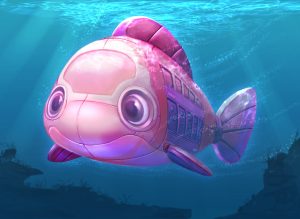
Is there such thing as too much excitement? How do you keep these experiences emotional while also broadly appealing?
“It’s this thing of making it exciting but not scary. Often times you push things ‘til you’ve gone a little bit too far and then have to rein in back. For some of the flight simulator stuff that we’ve done, Imagineers have toned down some of the motion controls because it becomes overwhelming. There’s so much stuff coming at you. But again, it’s walking that line between creating this concept that you’re in peril and that something’s gone wrong, but also make it fun at the same time.”
“Often times, they’ll rely on music to create that sense of excitement. So the sound design is creating this visceral sense of peril with the subwoofer, explosions and things with an attack, but then the music makes it more of a cinematic experience that evens it out a little bit and indicates the emotion. And as a sound effects person, I often times wish they would dial back the music a bit to make it more of a visceral experience because that’s the sort of thing for me that’s the most fun. But then again, you’re serving a greater good and there’s a story being told. But, if I were making my own ride, I would dump the music and scare the shit out of people.”
An experience at a theme park attraction is often times more than just the ride itself. Due to the popularity of these experiences, guest will sometimes wait up to several hours in a queue for the ride. WDI is known for making this queue as much part of the experience as the ride itself. What is it like to create sounds for a queue?
“In the SeaRider ride at Tokyo DisneySea, that was one where they set up the expectation in the queue to explain the technology and concept of what you’re going to be experiencing as you’re going through it. Traditionally, you approach the sound from the fact that there’s a main experience the audience having, but in this case, what happens before and after need to sustain their enjoyment all the way through.”
“Sometimes waits are up to hours long. I’m told that for the latest Guardians of the Galaxy ride at Disneyland, the wait time is like 4 hours or something. And it was the same thing with the Nemo Sub Ride (which used to be 20 Thousand Leagues Under the Seas). But in that case, audiences were waiting outside. So you don’t have the capability of entertaining them quite so much. It’s easier when it’s a contained environment where you can set up sound systems and video monitors to tell the story.”
“In movies, where it’s telling one linear narrative, each moment in storytelling may last for a short amount of time, a matter of seconds or something like that. Designing for queues is building to have a different pallet. I need to have the opportunity to build a soundtrack over a 10 minute period that evolves. There’s also creating environmental sounds and dialog that needs to be processed and placed. So then you’re creating 10 – 20 minute beds of audio that play over and over again. Again, it’s a different exercise from a lot of the other traditional storytelling; it’s a different way of thinking.”
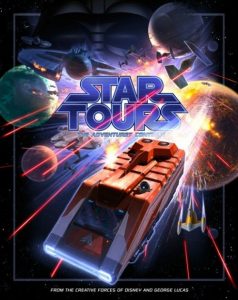
The alluring theme behind these experiences is that they are highly emotional and immersive. This storytelling feels natural to audiences even though it is in fact highly tailored to each moment. What is it like mixing sound in these kinds of dynamic environments?
“One of the other early attractions I worked on was a diorama in Disneyworld called Ellen’s Energy Crisis. It’s about a 30-minute experience where you’re in a car going through different scenes. Ellen Degeneres is in the movie, but then there are also scenes with a caricature [animatronic] of her explaining stuff. One of the funny things about that was that it was on a timeline that was irreversible. When mixing and doing the install, you got one shot at a mix choice, ie. ‘Should I make that dinosaur sound louder or softer?’ Gary Rydstrom, who did the mix on that one, has talked about how he would try and made a sound decision on loudness or placement, but that if he didn’t get it right, he had to ride around another 30 minutes. Because it was on a loop, there wasn’t an ability to go back and re-do certain scenes.”
“There’s a process of trial and error in a lot of these things. One of the ways in which we worked around mixing complications is by mixing in a static cabin without the motion control. After a few mix passes, we’d burn media cards and then go ride it with all the motion control, sound and practical effects. Then we’d make notes and go back to mix again in the static quiet simulator. One of the things you have to factor in is that it’s not often a pristine audio environment. There are motion control sounds, which can be frustrating. Also, I rode Star Tours for the first time with an audience about a year ago. We had mixed it in a static cabin and took notes in the motion control cabin, but in the actual ride, people were laughing and screaming through the whole thing.”
“For Soarin’ Over California in Disneyland Resort, the sweet spot for mixing was 30 feet up in the air. Obviously, we couldn’t get a console on one of the cranes, so we built scaffolding which was about 10 feet long and 30 feet high and put a little console on top of it. Then we’d climb up in the air and sit. There was only so much space for so many people to mix. The only way to get a bottle of water was to lower a bucket down and have somebody go grab it for you. It was an interesting concept of having this very sophisticated technology but at the same time relying on scaffolding and a bucket to get your job done. ”
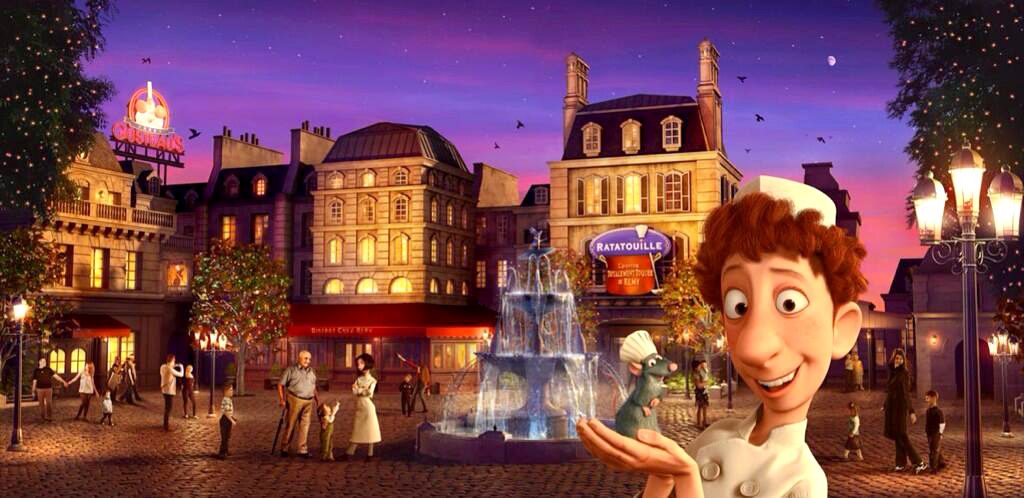
A natural extension of mixing for these immersive experiences is the idea of listening environments. This obviously has creative implications on how the story can unfold for an audience, but also seems to have technical implications as well. Have you had experience with this?
“One of the innovations that Imagineers created for the Ratatouille ride at Disneyland Paris was cars that were programmed and free moving instead of being on a track. The whole concept was about the audience having the experience of being a rat in a kitchen, like Ratatouille, where stuff was falling on them, where they were scurrying under the stove, and where they were going from one room to another. With that, there were two practical ways in which you could create sound. You were creating an environment, but there was also a story being told and music being played. Then, there were onboard speakers as well. So there were these two sort of concepts – mixing for onboard speakers next to you and mixing for the environment that you’re traveling in and out of.”
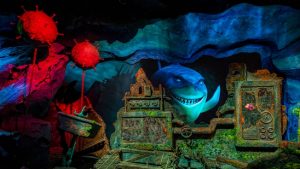
“In The Seas with Nemo & Friends Ride at Disneyworld, audiences were in clam shells as they were going through the ride. That was another one that was on a track but was going through a bunch of different environments with different presentations. Each presentation had a different sound environment that the audience was hearing, but then they were also experiencing stuff on the outside of each little presentation. For example, at one point there was this fish on a hydraulic robotic arm that was moving – coming in and going back. We had to have the sound coming from that in the midst of the other scenes.”
“There’s a lot of processing in terms of reverb or EQ, like rolling off the high end, and adding reverb or echo to make it sound farther away, or placing it between two speakers in some kind of configuration. Although a lot of that kind of manipulation is based off of the feel in terms of any given environment.”
“And at the end of the day, it’s all got to serve the greater story. Everywhere this is true, and in film as well, but no matter what you do, you have the tendency to think that what you’re doing is the most important thing. But it all has to serve the greater story. So sometimes you try and make it as good as you possibly can, but then it has to exist in the environment with the limitations that environment has.”
With all the work that you’ve done behind the scenes in these theme parks, has the magic of the experience of riding these rides lessened for you? Do you still enjoy going to Disneyland?
“I do. A lot of my experience has been when I’m doing an install. So I haven’t gone a lot just to enjoy the experience. But one of the things I get the biggest kick out when doing an install is when I go behind the scenes into the commissary. It always feels like an old movie set. There’s a cowboy and an indian having a patty melt together. And for me, that’s at least as exciting as the theme park itself. To see behind the curtain is like going into a kitchen behind the restaurant. You get to see really what’s happening, and all the work and level of expertise that goes into it.”
So in conclusion…
“This type of sound work is unique. It’s onto itself. It means a continual challenge of concepts and story telling with some of the smartest, most inspired people I’ve ever worked with (meaning the folks at WDI). They are dedicated to always trying to come up with something new. As I said, I go into each job thinking, ‘Well this will never work, how will we pull this off?’ Literally, every time I start a new job I think that. It’s gotten comical. Yet they top themselves with each project.”
“Sound wise it means innovation creatively in terms of design and mix, but also technically in terms of speaker placement and installation. Each job is a new puzzle. With feature work, you are funneling your work usually through the same output system. This pushes me because I consider myself a technically challenged person who was drawn to an inherently technically innovative field.”
Will this be on going work that you continue?
Definitely. I can’t say too much about the specifics because it’s under wraps and I signed an NDA, but Disney recently announced the new Star Wars Land. I think it’s opening in 2019. I’ve seen the plans and it is mind blowing. The complexity and scope both technically and creatively for sound is on a whole new level. I am beyond excited.
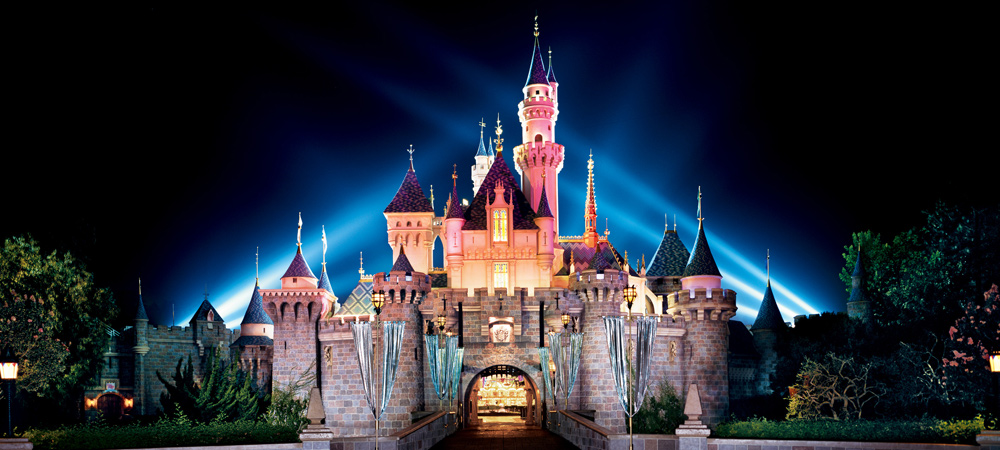
Appendix
*Theme Park Projects (In no real order)
WDI Projects
Circle of Life
Ellen’s Energy Crisis
Storm Riders
SeaRiders
Nemos Seas
Nemo Sub Ride
Star Tours
Ratatouille Ride
It’s Tough to be a Bug
Cinemagique
Philharmagic
Circlevision
Soarin Over California
Soarin Over the World
Wanda Group for China
Ultimate Energy